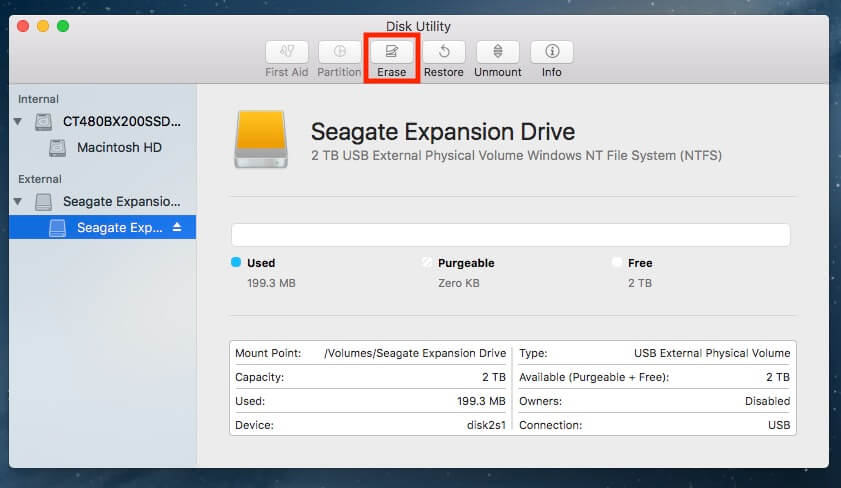

- #Seagate ntfs driver for mac not working how to
- #Seagate ntfs driver for mac not working drivers
- #Seagate ntfs driver for mac not working software
#Seagate ntfs driver for mac not working how to
RELATED: How to Install Packages with Homebrew for OS X Use the default options when installing it. This is more secure, but it’s more work.įirst, download FUSE for macOS and install it. However, you can use FUSE to mount NTFS partitions in read-write mode manually if you don’t mind using the Terminal. To make your Mac automatically mount NTFS partitions in read-write mode, you’ll have to temporarily disable System Integrity Protection and replace one of Apple’s built-in tools with a binary that is more vulnerable to attack. So this method is a security risk. This method is free, but it requires a good bit of work, and is less secure. The Best Free Third-Party Drivers: FUSE for macOS But Paragon NTFS does the same thing and is cheaper. You could also purchase Tuxera NTFS for Mac, which costs $31 and offers a fourteen-day free trial. If you own a Seagate drive, be aware that Seagate offers a free download of Paragon NTFS for Mac so you won’t have to purchase anything extra.
#Seagate ntfs driver for mac not working software
If you need this feature, paying for software that does it properly is worth it.
#Seagate ntfs driver for mac not working drivers
You also won’t have to fiddle with terminal commands to manually mount partitions, insecurely mount partitions automatically, or deal with potential corruption as you will with the free drivers below. It really does “just work”, so it’s the best option if you’re willing to pay a small amount of money for this feature. It’ll install cleanly and easily on modern versions of macOS, including macOS 10.12 Sierra and Mac OS X 10.11 El Capitan. Paragon NTFS for Mac costs $19.95 and offers a ten-day free trial. The Best Paid Third-Party Driver: Paragon NTFS for Mac We highly recommend paying for a third-party NTFS driver if you need to do this as the other solutions don’t work as well and are more work to set up. In fact, we’ve had it corrupt data before. It isn’t guaranteed to work properly and could potentially cause problems with your NTFS file system. However, it’s off by default and requires some messing around in the terminal to enable it.


There are several options for this, and you’ll need to choose one: RELATED: What's the Difference Between FAT32, exFAT, and NTFS?


 0 kommentar(er)
0 kommentar(er)
